
On Saturday, May 4, I participated in the eBird Global Big Day, which encourages birders around the world to contribute to citizen science efforts by birding and entering checklists into eBird on a single day.
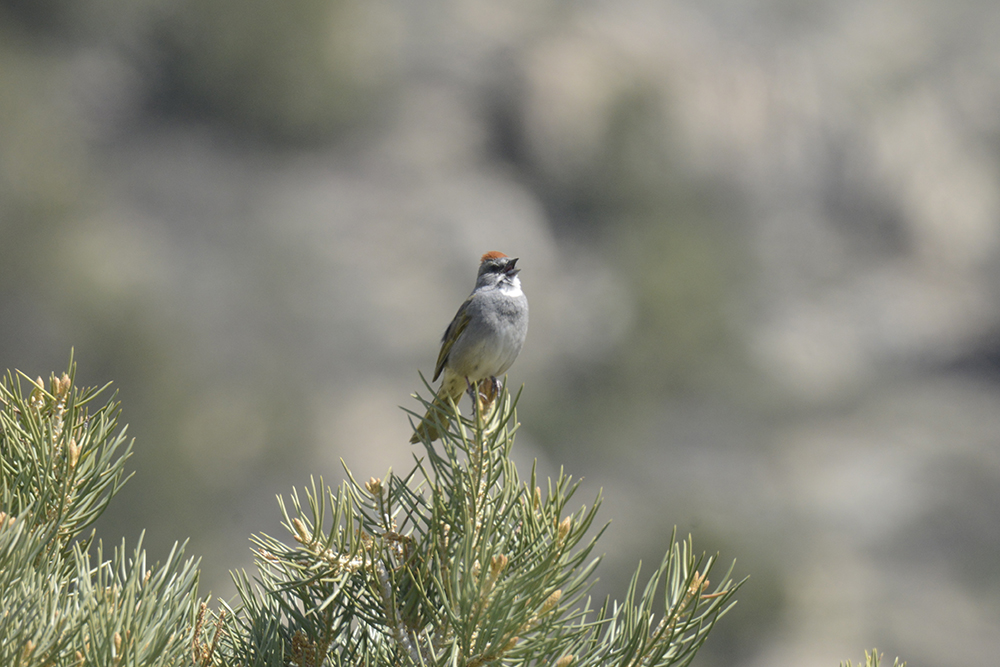
I decided to use this Big Day as a chance to scout my local hotspots and catch up with migration. In the past two weeks, neotropical migrants have been moving north to their breeding grounds, so there have been new species arriving daily. As the Committee’s Lead Naturalist Guide, I keep track of these changes so I can help visitors have to most up-to-date information on wildlife and wildflower happenings to enhance their time here.
I started the day with a Costa’s Hummingbird in the flowering apple tree outside my house at 6:30am—it was completely unexpected! My coworker Santiago joined me for the first hour of birding up Lee Vining Canyon, where we listened in awe to dozens of species sing vibrantly from perches low and high. Fox Sparrows and Green-tailed Towhees abounded on either side of the road, and House Wrens‘ bubbling songs echoed through the canyon every hundred yards. A MacGillivray’s Warbler song burst out from deep in a bush, always skulking. I think they say “chim-chim-chimmichurri” and it makes me want to eat tri-tip adorned with parsley chimmichurri sauce at Epic Cafe (they open this week!). We watched an American Dipper build a nest from moss below a waterfall up the canyon.
After a quick stop for breakfast, I headed to the Mono Lake County Park, where I heard a strange shriek right as I stepped out of my car. It sounded like a woodpecker and it was coming from high in the dead cottonwoods north of the park but I couldn’t quite place it. After I searched around a little, I found the caller: a Lewis’s Woodpecker! This watermelon-colored bird usually spends times in burned pine forests and woodlands, so it was exciting to see it in this location. Another highlight at County Park was an Osprey breaking off sticks for his nest from dead trees in the park. He looked like he was trying to land but then would lean forward as soon as he touched the branch and pull the branch with his strong talons to snap it off. It was so amazing to watch!
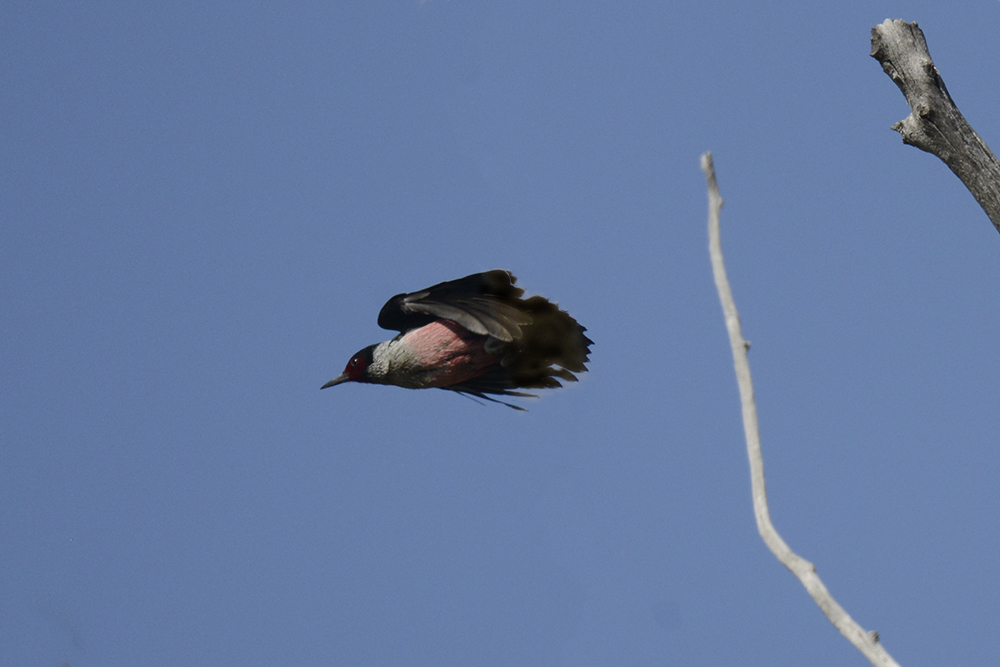
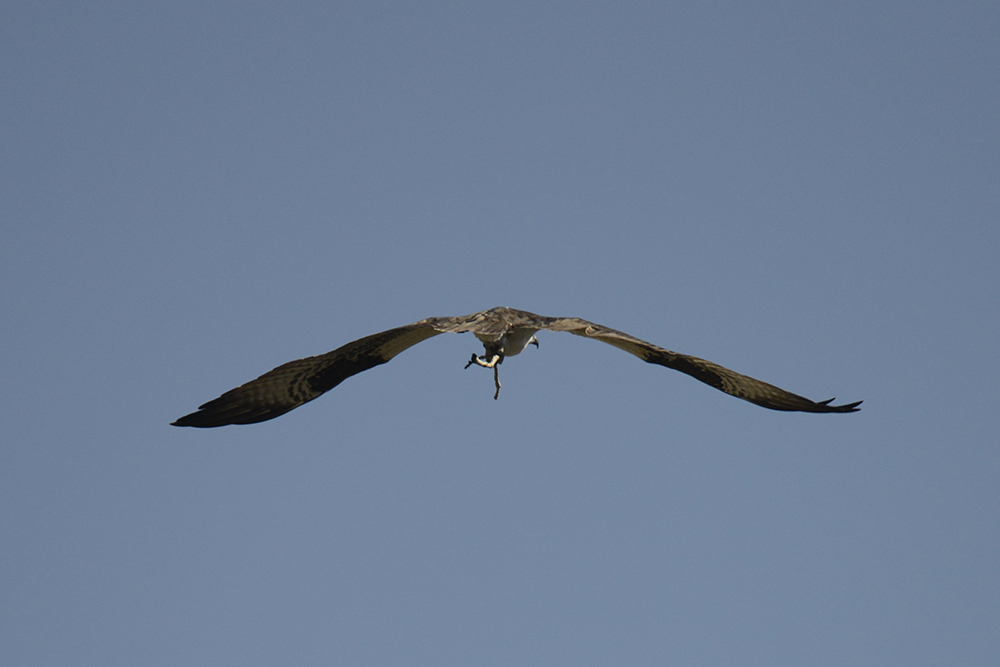
I drove down Cemetery Road and found a Western Kingbird and Chipping and Lark Sparrows at the cemetery. A Rock Wren called from the Caltrans Rockfall Project near Old Marina and a Spotted Sandpiper bobbed from a low tufa. The Lee Vining Creek delta was quiet, but I got great looks at a Yellow Warbler. As I was driving back on the dirt road a Black-billed Magpie flew across the road and a Blue-gray Gnatcatcher called from a blooming desert peach shrub.
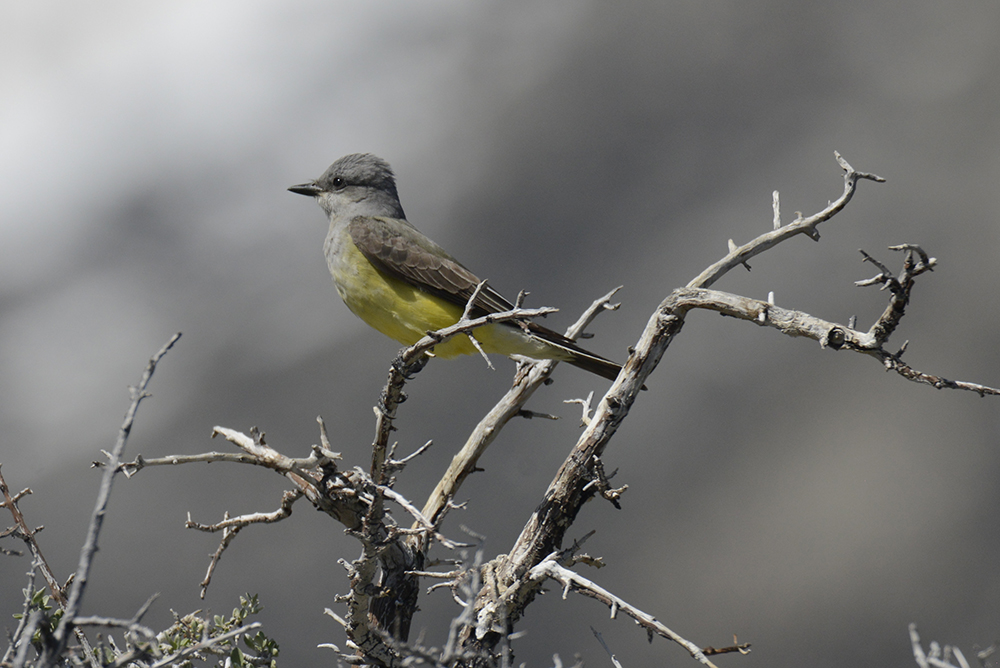
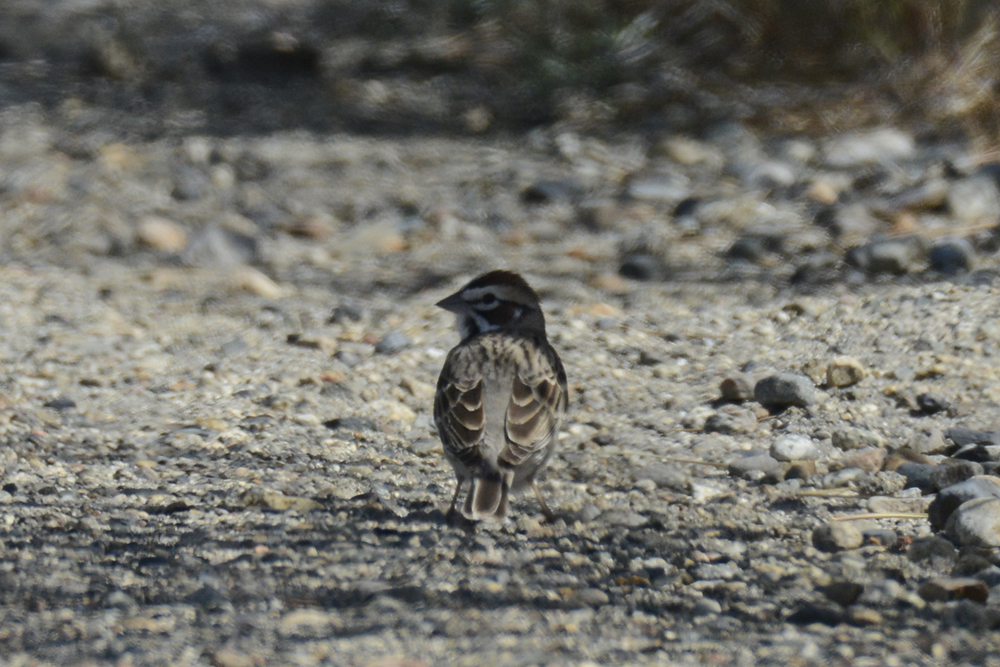
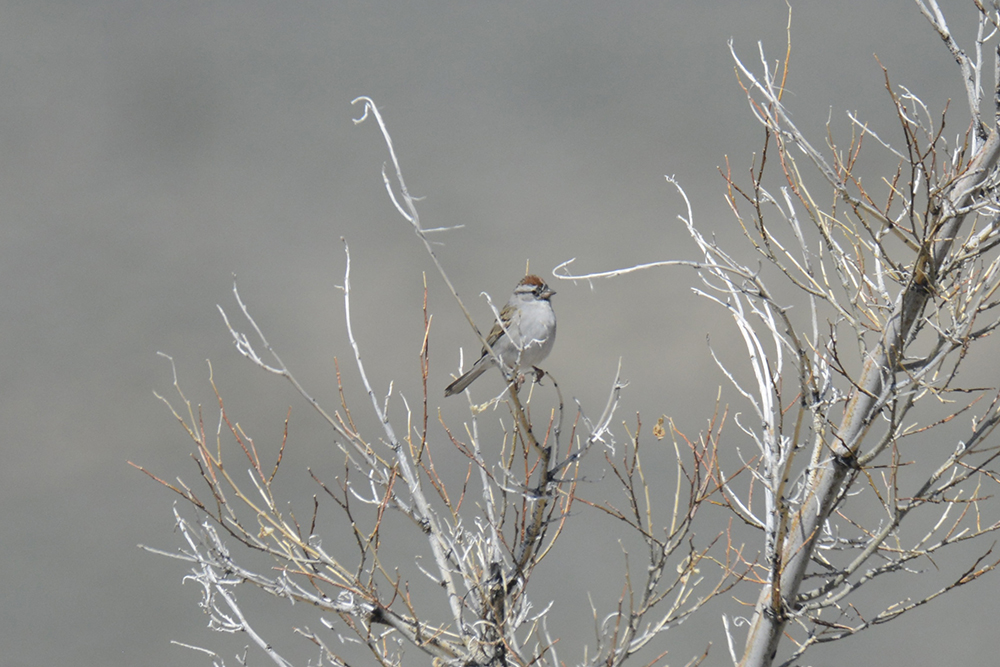
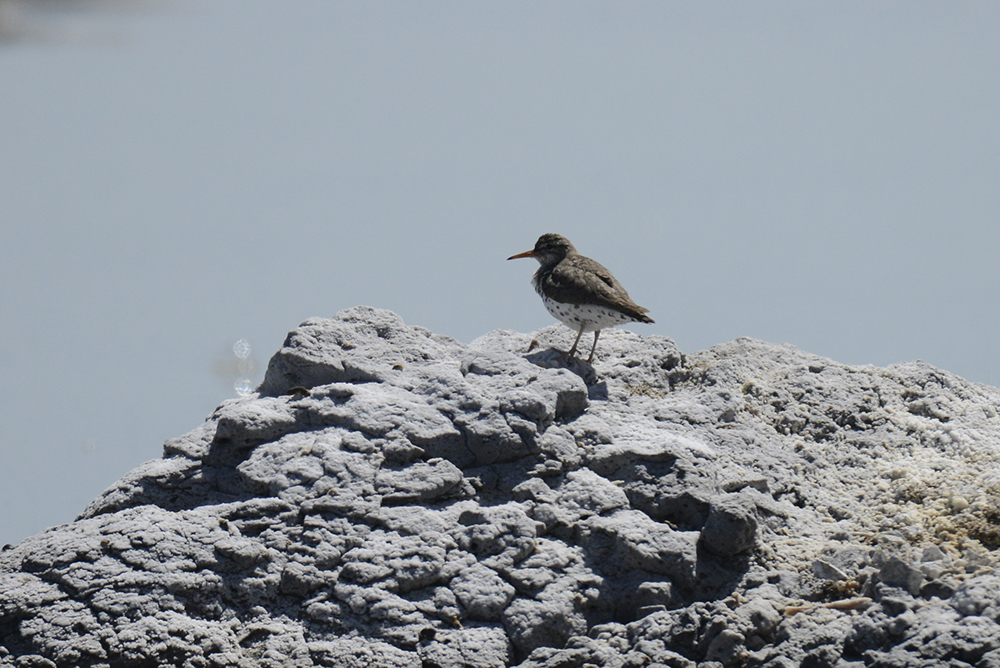
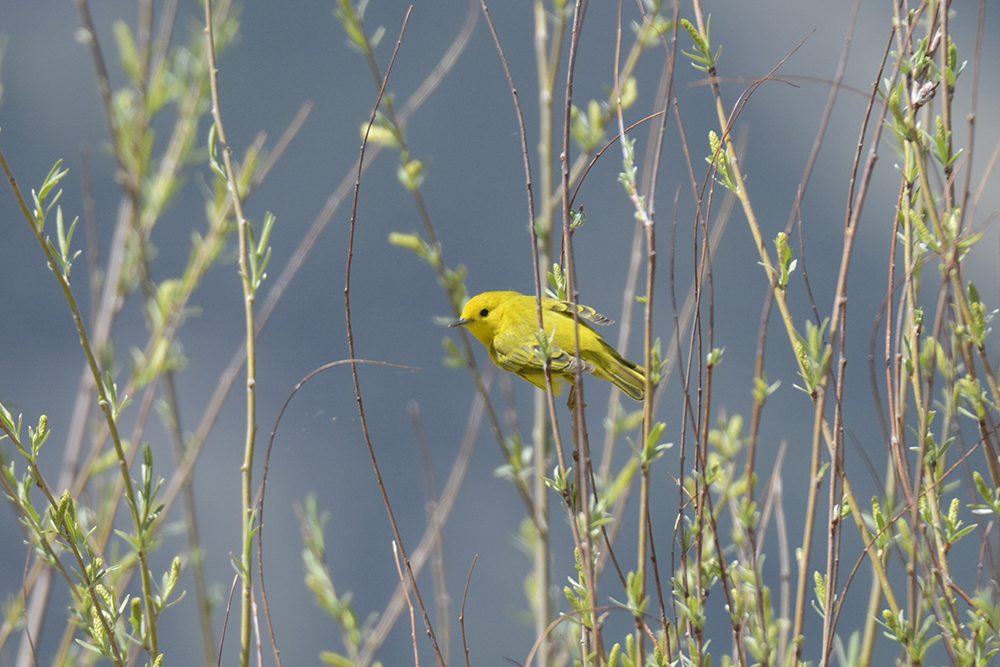
After lunch in town, I headed down to the south shore and immediately heard a Gray Flycatcher singing. While I was photographing it, a Sage Thrasher teed up on a bitterbrush and started to sing. Oh how I’ve missed that song! Later on down the road I found a Sagebrush Sparrow singing, another one of my favorite sounds of this sagebrush ecosystem.
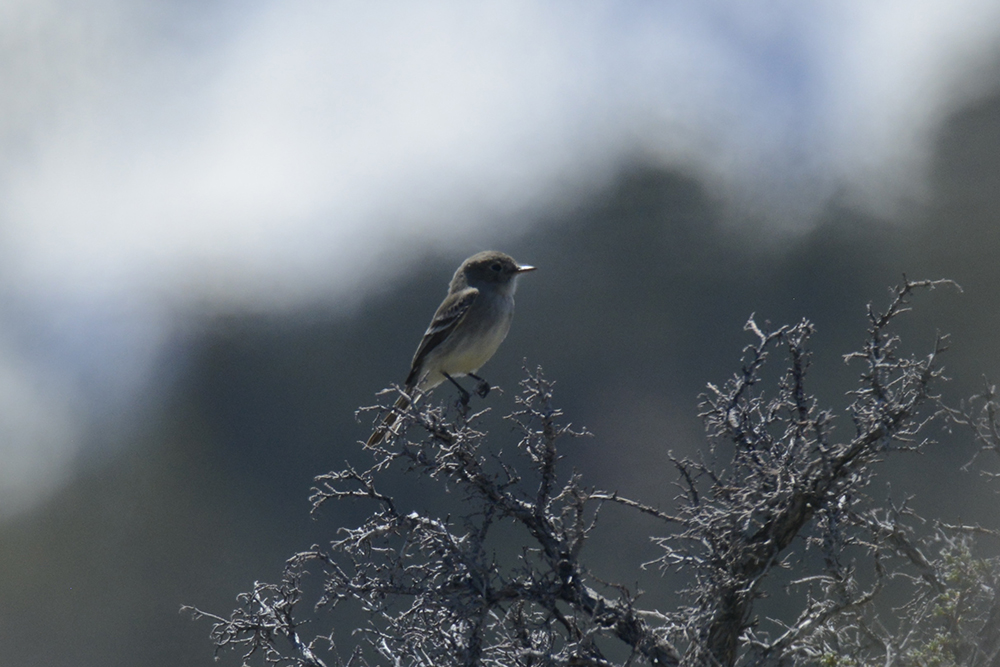
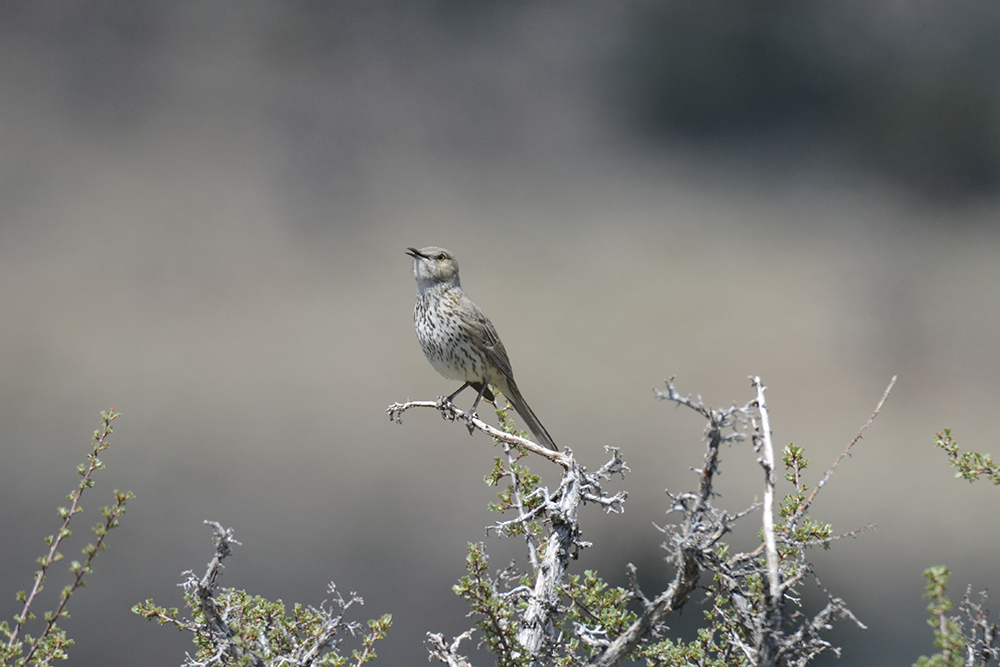
At Horse Meadows I found Vesper Sparrows and Brewers Sparrows singing from the tippy tops of pinyon pines, and at the upper meadow, a Sooty Gouse was booming, “whoob-whoob-whoob” from deep in the forest. On my way out a brilliant pair of Mountain Bluebirds lit up the burned trees in the lower meadows, the male brighter than the blue sky.
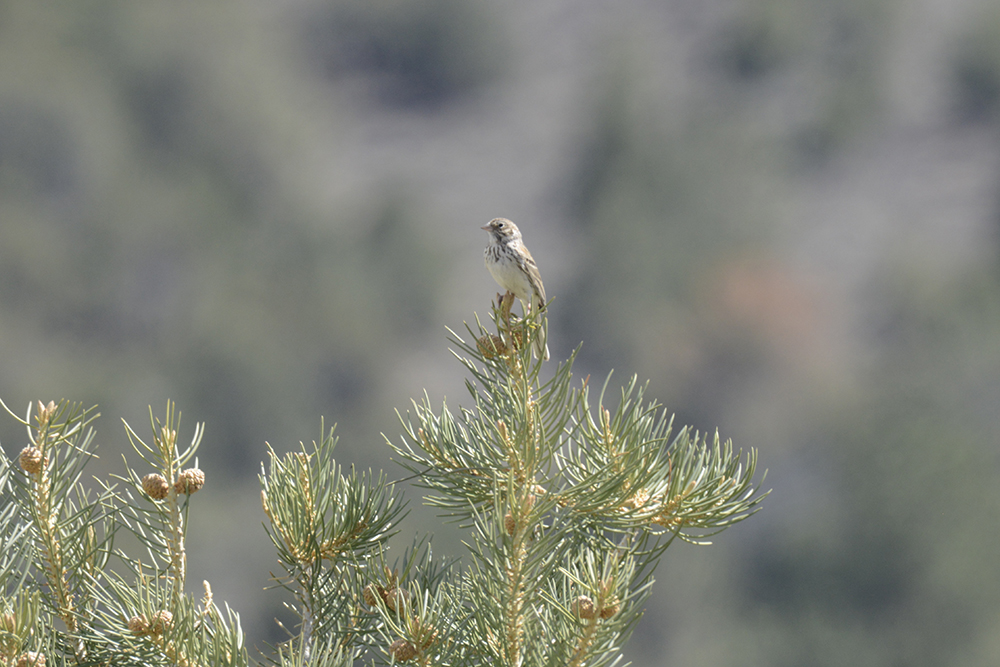
At the end of the day, I sat down at the Latte Da coffee shop (opening soon!) and watched Lesser Goldfinches at the feeder and listened to White-crowned Sparrows sing while hopping around in the garden along with an unexpected Lincoln’s Sparrow.
One bird I missed throughout the day, but I knew was around, was a Say’s Phoebe. I went to the Scenic Area Visitor Center where one is nesting. She looked down at me, cozy in her nest, and I thanked her. What a good day. I ended it with 76 species, one above my goal.
The results are in for the Global Big Day: According to the eBird website. “On 4 May, 32,500 people ventured outside in 171 countries, finding 6,816 species: 2/3rds of the world’s bird species in a single day. This is a new world record for the number of people birding on a single day.” I am proud to have participated and excited for a great season of birding! If you are interested in coming out on a guided birding, ecology, or natural history trip with me this summer, check out monolake.org/trips or send me an email.
There is also still space in some really great Mono Basin Bird Chautauqua field trips, coming up June 14–16, 2016. Register here.
